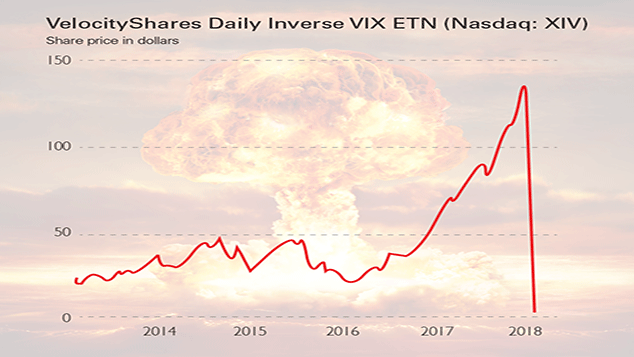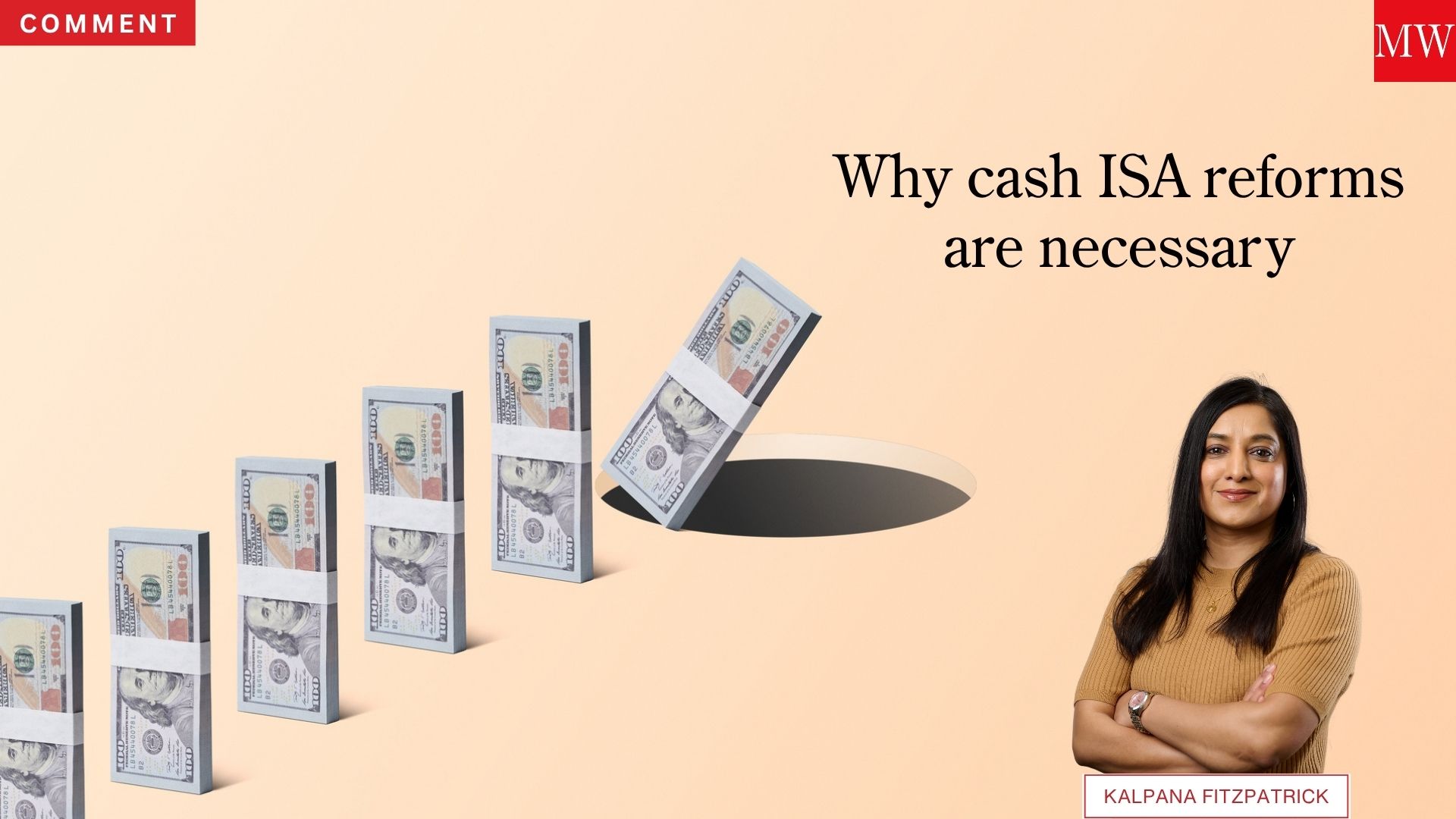Beware of a quick Vix
The crash of an obscure derivative-based fund demonstrates why you should never invest in anything you don’t understand.


The crash of an obscure derivative-based fund demonstrates why you should never invest in anything you don't understand.
Last week, a small hedge fund made an 8,600% return by betting on the inevitable. It had bet that the VelocityShares Daily Inverse Vix Short-Term exchange-traded note, which was shorting the Vix index, would go to zero. Given that Credit Suisse, the product issuer, warns in bold type in the prospectus (albeit on page 197) that "the long-term expected value of your ETNs is zero", this would appear to be close to a sure thing.
And yet the odds of such an outcome were priced very cheaply, which is how US-based Ibex Investors managed to turn a mere $200,000 into $17.5m when the product (XIV for short) blew up last week as a result of volatility in the markets suddenly spiking hard (see the chart above).
Subscribe to MoneyWeek
Subscribe to MoneyWeek today and get your first six magazine issues absolutely FREE

Sign up to Money Morning
Don't miss the latest investment and personal finances news, market analysis, plus money-saving tips with our free twice-daily newsletter
Don't miss the latest investment and personal finances news, market analysis, plus money-saving tips with our free twice-daily newsletter
There are some useful reminders here for investors. Firstly, be wary of complexity, and don't invest in anything you don't understand anyone who had actually read the XIV prospectus would surely have thought twice. Secondly, don't extrapolate the recent past into the distant future XIV investors were betting on volatility continuing to fall, even though it was already at or near historic lows.
Finally, avoid fragile investment strategies that effectively involve picking up pennies in front of a steamroller, as the adage goes those that put money in your pocket nicely for as long as certain conditions hold true, but then squish you if your luck changes. The XIV made its investors a great deal of money until the day it lost them everything.
But this isn't just a story about a few obscure derivative-based funds. The end of an era for low volatility could have much broader implications. As Bloomberg notes, "the average volatility rate for 2017 was lower than every single trading day from 22 December 1995 to 20 June 20 2005".
That backdrop of extraordinary calm has, as Edward Chancellor notes on Breakingviews, incentivised the use of many more strategies that are effectively short volatility, even if they are not direct bets on the Vix (see below). The success of trades ranging from buying high-yield debt to share-buyback schemes funded by taking on corporate debt all depend on volatility remaining quiescent and on interest rates being suppressed.
With global central banks and the Federal Reserve in particular now tightening monetary policy rather than loosening it, this spike in volatility could merely be the first of many. As Jonathan Lavine of Bain Capital tells the Financial Times, the biggest concern about the recent spike was "the ferocity of the move, not triggered by any material news and propelled by a small corner of financial markets. You have to ask yourself what would happen in the event of real bad news."
The Vix index explained
The CBOE Volatility Index (which has the ticker symbol VIX) was launched in 1993, based on ideas in a research paper by finance academics Menachem Brenner andDan Galai. It aims to measure investor expectations of volatility in the S&P 500. In other words, it is a measure of how violently the stockmarket is expected to swing around over the following 30 days.
The Vix's value is derived from the price of options bought by investors to protect (hedge) against a fall, or to bet on a rise in the market. The cheaper the options, the lower the Vix.
A low Vix (below 20, loosely speaking) indicates that investors expect the market to be calm, while higher readings suggest the opposite, which is why the Vix is sometimes known as Wall Street's fear gauge.
Yet while in the past it has been cited by some as a potentially contrarian indicator (a high Vix is bullish, a low one bearish), in practice, a higher or lower Vix has shown little predictive value.
One problem with the Vix's growing popularity is that as both Barron's and Bloomberg highlighted last year the proliferation of direct and indirect bets on the index staying low has in itself distorted and suppressed the Vix, creating the potential for a sharp spike, as seen last week.
Get the latest financial news, insights and expert analysis from our award-winning MoneyWeek team, to help you understand what really matters when it comes to your finances.
John Stepek is a senior reporter at Bloomberg News and a former editor of MoneyWeek magazine. He graduated from Strathclyde University with a degree in psychology in 1996 and has always been fascinated by the gap between the way the market works in theory and the way it works in practice, and by how our deep-rooted instincts work against our best interests as investors.
He started out in journalism by writing articles about the specific business challenges facing family firms. In 2003, he took a job on the finance desk of Teletext, where he spent two years covering the markets and breaking financial news.
His work has been published in Families in Business, Shares magazine, Spear's Magazine, The Sunday Times, and The Spectator among others. He has also appeared as an expert commentator on BBC Radio 4's Today programme, BBC Radio Scotland, Newsnight, Daily Politics and Bloomberg. His first book, on contrarian investing, The Sceptical Investor, was released in March 2019. You can follow John on Twitter at @john_stepek.
-
 The investing fear: why cash ISA reforms are necessary
The investing fear: why cash ISA reforms are necessaryReeves indicates cash ISA reforms are still on the horizon in her Mansion House speech as she makes the case for more savers to invest, but they overcome the fear?
-
 The true nature of economic growth
The true nature of economic growthOpinion The feds making a number go up is one thing; true economic growth is quite another, says Bill Bonner
